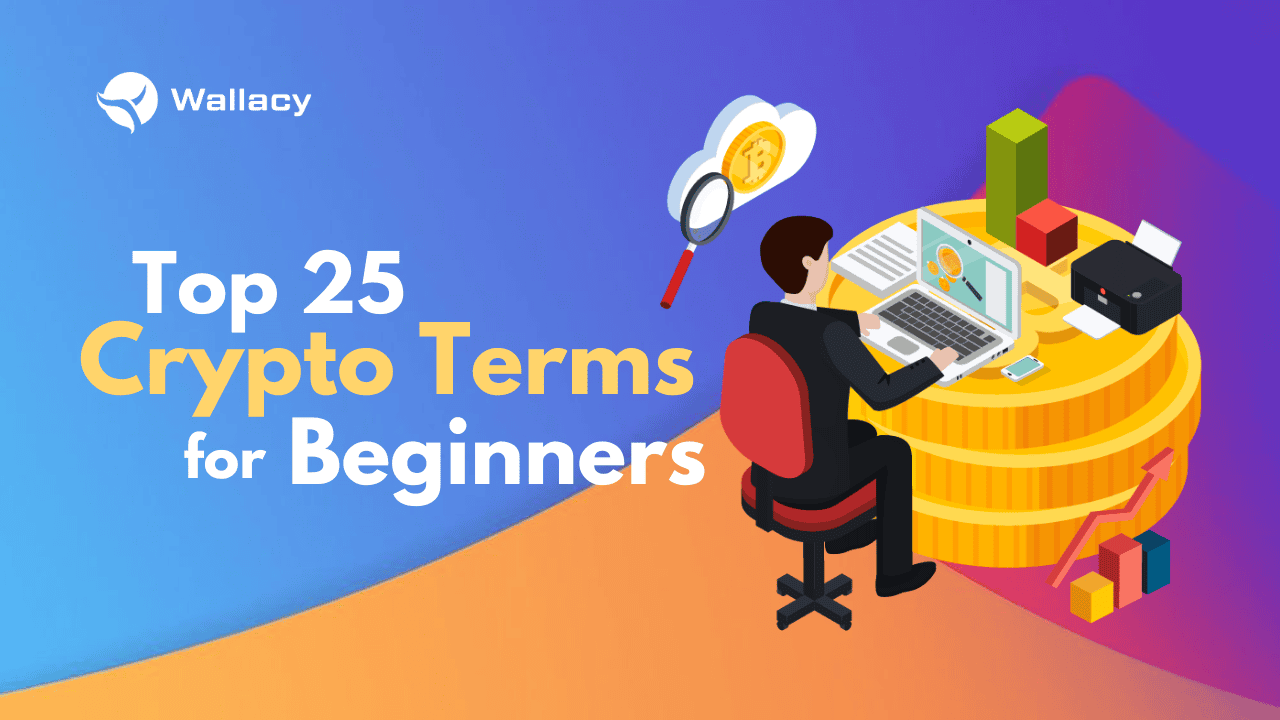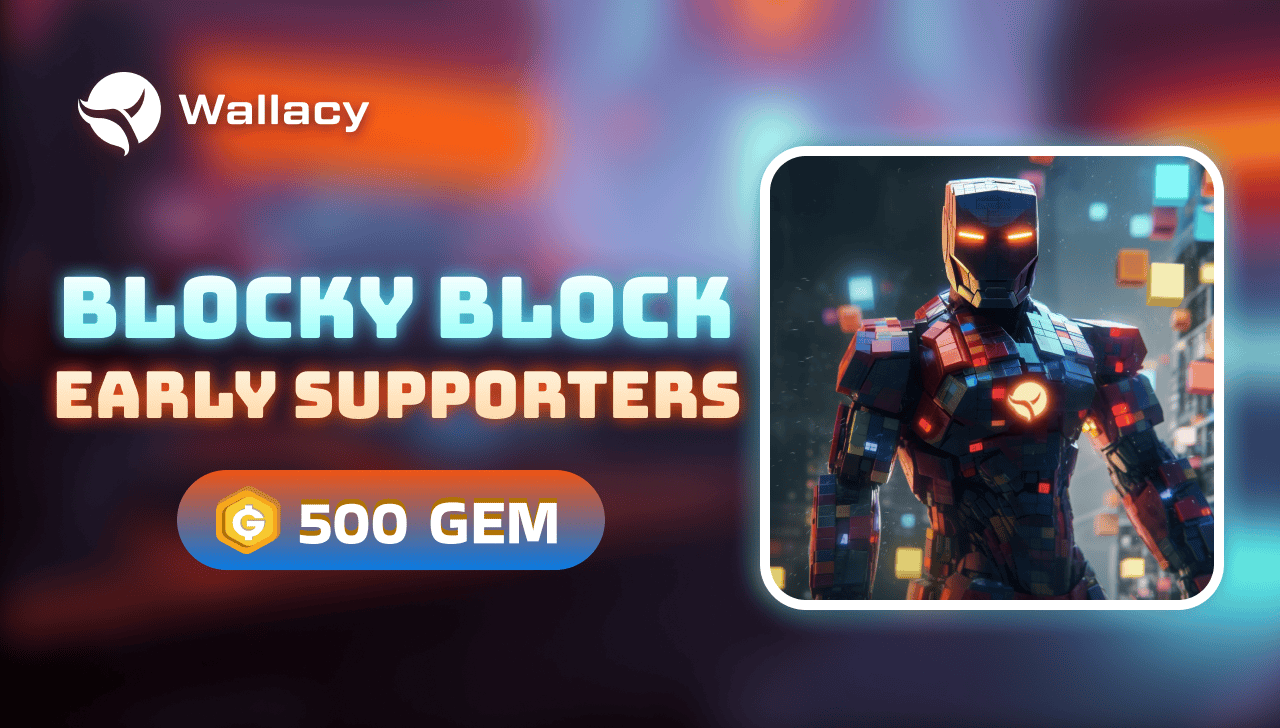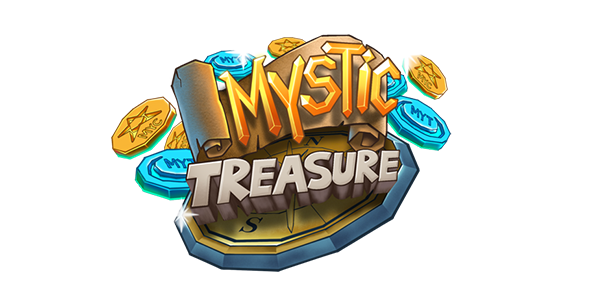
The world of cryptocurrency can be an exciting yet confusing place, especially for newcomers. To navigate this digital landscape effectively, you need to grasp the essential terminology. Whether you’re a beginner crypto enthusiast or an experienced trader, understanding these terms is crucial.
Read on and we’ll cover the essential 25 crypto terms that you’re bound to encounter during your cryptocurrency journey!
1. Altcoin
A term used to describe any cryptocurrency besides Bitcoin. Since Bitcoin was the original cryptocurrency, all other digital coins are regarded as alternatives to the original. Several well-known altcoins encompass Ethereum, Litecoin, and Dogecoin.
2. dApps
dApp is an abbreviation for “decentralized app,” referring to any practical application of blockchain and/or cryptocurrency technology. DApps can serve a wide range of purposes, including but not limited to games, social media platforms, financial services, and more.
3. DeFi
Short for “Decentralized Finance,” is a blockchain-based financial ecosystem that aims to recreate traditional financial services, such as lending, borrowing, trading, and asset management, in a decentralized and permissionless manner. It eliminates the need for intermediaries like banks and allows users to directly interact with financial services using cryptocurrencies and smart contracts.
4. Fiat
Refers to government-issued currencies such as the U.S. dollar or Japanese yen, and more broadly, any currency controlled by a central authority. In contrast, Bitcoin, with its decentralized nature, stands in opposition to traditional fiat currencies.
5. Gas
Gas represents the cost related to computational resources used in finalizing transactions on the blockchain, and it gets passed on to network participants in the form of fees..
6. Halving
Halving is among the most eagerly awaited events for Bitcoin. It involves the reduction of mining rewards for Bitcoin after approximately every 210,000 blocks have been mined, typically occurring over a four-year period. The purpose of halving is to maintain a controlled and non-exponential increase in the number of circulating Bitcoins.
7. Mining
Mining is the method by which new cryptocurrencies are created. Numerous cryptocurrencies rely on a proof-of-work mining mechanism, where computational resources are delegated towards solving intricate mathematical puzzles. This process serves the dual purpose of securing and powering the network, as well as generating new tokens.
8. NFT, or Non-Fungible Token
A digital asset that represents ownership of a unique item or piece of content, such as digital art, music, videos, virtual real estate, collectibles, and more, on a blockchain. Unlike cryptocurrencies like Bitcoin or Ethereum, NFTs are not interchangeable with one another because each has a distinct value and specific characteristics. NFTs saw a surge in popularity in 2021, reaching a peak with a staggering $69 billion auction for a digital NFT artwork.
9. Pump and Dump
A scheme in which the price of a cryptocurrency is artificially inflated through false recommendations (pumping) and then sold at a higher price (dumping), often resulting in significant losses for unsuspecting investors.
10. Satoshi
Satoshi means one of two things. Satoshi Nakamoto is the pseudonymous founder of Bitcoin. The true identity of Satoshi Nakamoto remains unknown, and this person disappeared from public view after launching Bitcoin in 2009. A Satoshi is also the smallest unit of Bitcoin, representing a one-hundred-millionth (0.00000001) of a Bitcoin.
11. Stablecoin
A type of cryptocurrency that is designed to have a stable value, typically by being pegged to a stable asset like a fiat currency (e.g., USD). It aims to minimize the price volatility that’s common in many other cryptocurrencies like Bitcoin. Stablecoins are often used for trading, digital payments, and as a store of value due to their price stability.
12. Rekt
Rekt is a crypto slang for “wrecked.” It is commonly used in the cryptocurrency community when a trader or investor has suffered significant losses
13. Whale
Refers to an individual investor or entity that holds a substantial amount of a particular cryptocurrency. These whales often have significant influence on the market due to the large amount of cryptocurrency they control. Their buying or selling activities can lead to notable price movements, and they are closely watched by other traders and investors.
14. Bear Market
It is used to describe a market condition characterized by a prolonged decline in the prices of assets, such as cryptocurrencies. During a bear market, investor sentiment is generally pessimistic, and prices tend to continue falling due to selling pressure. It often signifies a downturn in the market and can lead to decreased trading activity.
15. Bull Market
A market phase marked by increasing asset prices and favorable investor sentiment. During such periods, prices usually exhibit a steady upward trend, driving greater trading activity and instilling optimism among investors. Bull markets often coincide with periods of economic growth and positive market conditions.
16. Cold Storage
A secure method for keeping cryptocurrencies offline, often using hardware devices or paper wallets. This approach keeps digital assets disconnected from the internet, minimizing exposure to cyber risks and unauthorized access, thus enhancing security.
17. Crypto Wallet
A crypto wallet is a digital tool that allows individuals to securely store, manage, and transact with their cryptocurrencies.
To clarify, they don’t physically store your coins as a traditional wallet does. Instead, your Bitcoin, ETH, BNB, etc. all exist on the blockchain, and your crypto wallet simply gives you access to them via private keys.
For example, Wallacy Wallet is a crypto wallet!
18. Liquidity
Refers to how easily an asset, such as cryptocurrencies, can be bought or sold without substantially impacting its price. Greater liquidity indicates a higher level of trading activity and a narrower gap between buying and selling prices, making it easier for traders to execute orders efficiently.
19. Market Cap, or market capitalization
Represents the total value of a cryptocurrency or asset currently in circulation. It’s calculated by multiplying the current price of the asset by the total number of coins or tokens that exist. Market cap serves as a measure to gauge the relative size and value of different cryptocurrencies, helping investors assess their importance in the market.
20. P2P (Peer to Peer)
A decentralized method of directly sharing resources or information among participants without relying on intermediaries. In the world of cryptocurrencies, P2P commonly denotes transactions and exchanges taking place directly between users, bypassing centralized exchanges. This approach fosters direct and trustless interactions within the network.
21. Smart Contract
A self-executing digital contract with the terms of the agreement directly written into code. These contracts automatically execute and enforce themselves when predefined conditions are met, without the need for intermediaries like lawyers or banks. They are commonly used in blockchain applications for tasks like automating payments or verifying the authenticity of digital assets.
22. Ponzi Scheme
A deceitful investment plan in which profits are distributed to initial investors from the funds of later investors rather than from genuine earnings. These schemes depend on a constant influx of new investors to maintain returns and typically crumble when new investments decline.
23. Initial Coin Offering (ICO):
A fundraising technique utilized by cryptocurrency projects. It entails selling tokens to investors in return for cryptocurrencies like Bitcoin or Ethereum. ICOs are a popular means of raising funds for the development of new blockchain-based projects and platforms.
24. Limit Order
An instruction given to a cryptocurrency exchange, specifying the price at which a trade should be executed or a more favorable price if available. It empowers traders to control the price at which their trade occurs, ensuring that they either buy or sell at a predetermined level.
25. Block Explorer
An online tool or platform that allows users to explore, view, and track information about transactions happening on the blockchain. It provides a detailed and transparent record, including transaction histories, wallet balances, and block details.
Join us:
Website | Telegram Channel | Telegram Group | Twitter | Facebook | Blog | Youtube | Discord















